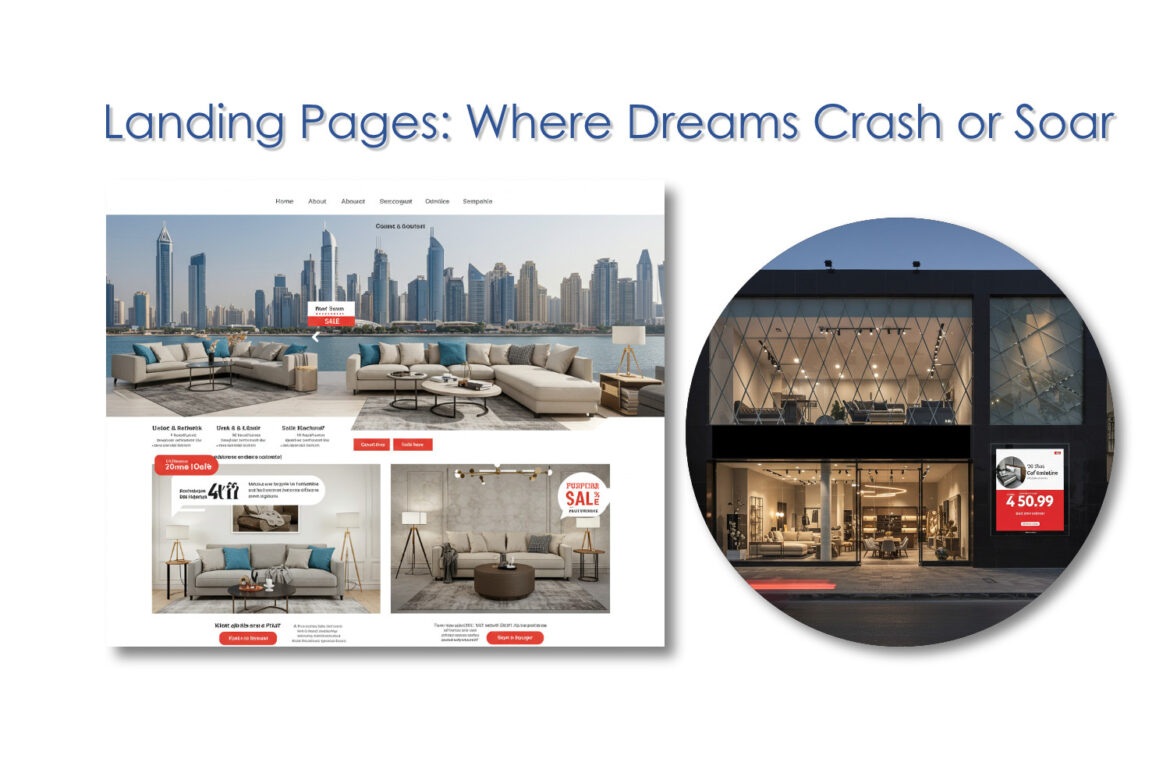In Dubai’s Al Quoz district, behind the rows of glittering skyscrapers and mega malls, a quieter kind of ambition hums.
It’s in the modest furniture shops where owners still sweep their own storefronts and greet every visitor like an old friend.
One afternoon, as the sun dipped into that golden, sticky heat of the UAE, a small business owner sat behind his desk — not designing new sofas or polishing showpieces, but scrolling through his Google Ads account, puzzled.
He had spent 1,500 dirhams last week alone.
The results? A few scattered clicks. A few vague inquiries. Nothing real.
“It’s like shouting into the desert,” he muttered.
And yet, he had seen others succeed — small businesses with half his budget turning Google Ads into a real driver of foot traffic and sales.
What were they doing differently?
It wasn’t magic.
It was precision, patience, and a few critical practices that transformed every dirham spent into something more than a click — it became a conversation, a handshake, a sale.
Here’s what he (and now, you) need to know.
1. Start with a Real Goal, Not a Wish
Too many campaigns begin with a vague idea: “I want more sales.”
But successful advertisers start with specifics:
- 10 new showroom visits per week.
- 50 product inquiries in 30 days.
Without a target, your ads will wander, just like your customers.
2. Sell to People, Not to the Algorithm
Yes, Google Ads uses AI. Yes, machine learning is powerful.
But your real audience is human.
Understand who they are: not just demographics, but desires.
Are they furnishing a first home? Upgrading from IKEA to something permanent?
Tailor your ads to their story, not just their search terms.
3. Simplify Your Campaigns (Think Like a Customer)
The best campaigns are simple.
Imagine walking into a showroom: one area for sofas, one for beds, one for dining sets.
Your Google Ads structure should feel the same: clear, organized, intuitive.
Tightly grouped keywords, sharp ad groups, clean navigation.
When customers find what they want quickly, Google rewards you with lower costs.
4. Chase Intent, Not Just Traffic
It’s tempting to chase broad keywords: “furniture Dubai,” “sofas UAE.”
But the real treasure lies in intent:
- “Buy sectional sofa in Dubai.”
- “Modern office furniture Al Quoz.”
The more specific the search, the closer they are to buying.
Focus on where the intent is hot.
Use negative keywords to politely shut the wrong doors.
5. Keep Your Hand on the Wheel (Don’t Over-Automate)
In the rush to save time, many small businesses hand over full control to Google’s automated bidding.
Sometimes it works.
Often, it doesn’t.
Especially for modest budgets, it’s smarter to start with manual bidding or at least set maximum CPC limits.
Steering your ship beats drifting, every time.
6. Landing Pages: Where Dreams Crash or Soar
An ad’s job is to spark interest.
But the landing page? That’s where decisions happen.
Is it fast? Clear? Does it feel like a natural continuation of the ad’s promise?
If your page feels confusing, slow, or mismatched, even the best ads can’t save you.
A great landing page doesn’t have to be fancy. It just has to be focused and fast.
7. Extensions Aren’t Extras — They’re Essentials
Think of ad extensions like signs in a store:
- “Sale Section”
- “Customer Service”
- “Call Now”
They guide visitors to what they need faster, and make your ad take up more space for free.
Always add sitelinks, callouts, and phone numbers wherever relevant.
It’s a small thing that can double your chances of a click.
8. Timing Isn’t Everything — It’s the Only Thing
A store doesn’t stay open 24/7 for a reason.
Neither should your ads.
Use your campaign data to find when your audience is most active — evenings? Weekends? and focus your budget there.
Showing ads at the wrong time is like fishing when the tide is out.
9. Test Small. Learn Fast. Adjust Often.
No one, not even the experts, can make the perfect ad on the first try.
Treat every ad like an experiment:
- Try two different headlines.
- Test a call-to-action.
- Swap an image.
The quicker you learn what resonates, the quicker you profit.
10. They Left? Good. Now Bring Them Back.
Not every visitor will buy today.
But with remarketing, you can gently remind them tomorrow.
Sometimes, that extra nudge — a new promotion, a better offer — is all it takes.
Set up remarketing early. It’s like planting seeds for future harvests.
Final Reflection
When small businesses in Dubai — and anywhere — approach Google Ads thoughtfully, it becomes less about fighting for attention and more about earning it.
The secret isn’t spending more.
It’s thinking more.
And like that furniture store owner, the businesses that succeed will be the ones who remember: you’re not buying clicks.
You’re building relationships, one small moment at a time.

